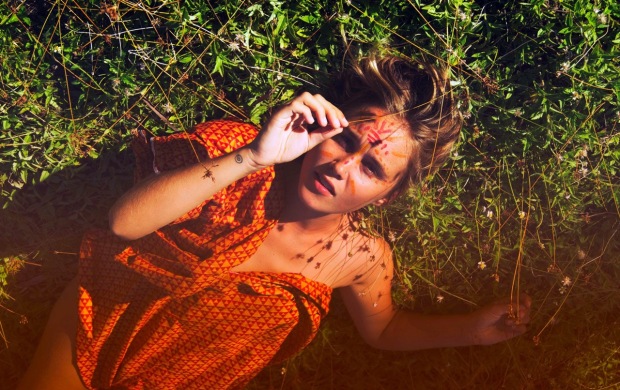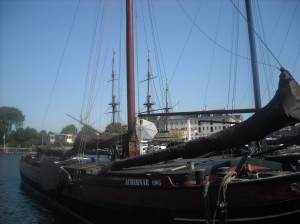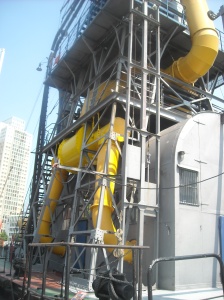
If you’ll recall last week, I posted the first part of my interview with Josje Leyten, the sailor who made a splash, literally, with her videos as a crew member aboard superstar sailboat SV Delos, and has now embarked upon a brave new journey as an artist and designer at Ramatree.
The response was amazing! Friends and fans from all over the globe stopped by to check out the interview, leave comments, and wish Josje good luck. Lucky we saved the best for last!
Now, here’s part 2, where we talk about the meaning of “gypsy pirate,” how she conquers fear, and what’s next for her.
Q: You call yourself a gypsy pirate, which I love. Why, and what does that mean to you?
A: Oh thank you! Well to be fair, I like to consider myself both of those things; part gypsy, part pirate. My sailing and nomadic journey have definitely shaped me into this being and I just feel so free and liberated when I am being a Gypsy Pirate. It doesn’t necessarily mean I wear 1000 layers of bohemian styled clothing and a ring on every finger, nor does it mean I live on an old wooden boat and drink rum straight from the bottle, although I do enjoy all of the above. To me, its more a feeling, it evokes a freeing sense of being and my inner heart calling. I’m big on following feelings, not so much thought, because thoughts can be destructive if you are not aware of them. Feelings are true and come from within. You can always feel if something is right, it’s your intuition and it always comes first. Learning how to listen to that is what I am trying to do, letting this feeling lead me through this forest path. So to me, being a Gypsy Pirate evokes this feeling of ME.

Q: To me, being a pirate means having no fear–or at least not giving into it. What’s your biggest fear, and how do you conquer it, or work toward conquering it?
A: Hmmm, I think my biggest fear would be feeling ‘stuck’, not moving forward, or feeling ‘trapped’. I like the expression that there is never any grass growing under my feet. But at the same time, I am a firm believer that everything happens for a reason, so whatever happens will happen, and it is meant to be. So in saying that, I can’t really be afraid of anything right?!
Q: What’s next for you? What does the future hold for Ramatree?
A: I will be based here In New Zealand over the summer but next year brings a complete open book, which I am super excited about! I am finding the balance between setting my goals and dreams, yet also allowing myself to flow down the river. Truthfully, I have absolutely no idea what the future holds, which is both extremely frightening and extremely exhilarating! I love not knowing what’s around the corner, it makes life more exciting, more thrilling, more liberating. There are so many branches and directions I want Ramatree to grow in, but at the end of the day, I cannot force it one way or another. I must let nature and the Universe nourish and grow me the way nature intended. I am super fucking excited to see where and how far it will go though! I am seeking the light, as trees seek the light, I know I will grow up to where there are no limits.

Q: Anything else you want readers to know about you and your work?
A: I think a sense of mystery is always a good ally to have on your side! I just love to create and tap into my artistic, open, flowing space where anything and everything is possible. I live for spontaneity, adventure, photography, visual media, freedom and one love! I’m open to collaborations, bookings, ideas, people, anything, so feel free to email me if reading this ignited something inside of you! Much love and light!
That’s it for the interview with Josje! What do you think? Leave a comment below.
I hope to bring you more interviews and features with inspirational and fearless sailors, artists, and dreamers , so watch this space!





























